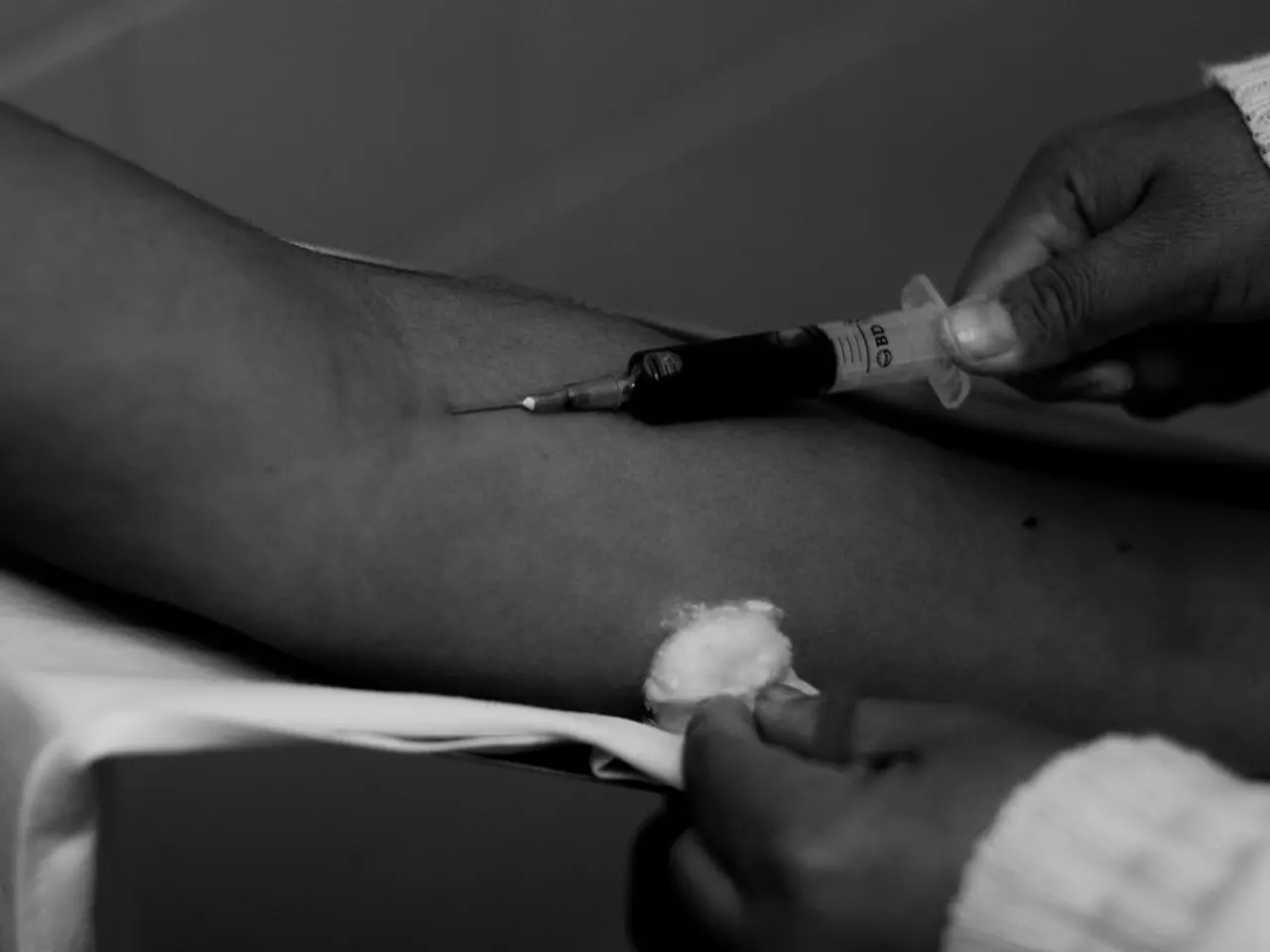Graft-versus-host disease: a complication that can occur after a stem cell or bone marrow transplant, where the donor's immune cells attack the recipient's body tissues, causing inflammation and damage.
In the realm of stem cell and bone marrow transplantation, a condition known as Graft-Versus-Host Disease (GVHD) can potentially arise. This occurs when donor immune cells, intended to help the recipient, instead attack the recipient's body. Here's a comprehensive guide to understanding this complex condition.
GVHD is more likely to occur when the donor and recipient have different human leukocyte antigen (HLA) types, as this increases the likelihood of the donor immune cells recognizing the recipient's body as foreign. The use of chemotherapy or radiation to prepare the recipient for transplantation can also cause tissue damage, leading to the release of inflammatory cytokines that exacerbate GVHD.
When donor T cells encounter host antigens presented by antigen-presenting cells, they become activated and target the recipient's tissues, leading to GVHD. The presence of minor histocompatibility antigens that differ between the donor and recipient can also trigger GVHD.
While GVHD is primarily associated with allogeneic hematopoietic stem cell transplantation, it can theoretically occur with blood transfusions if the donor blood contains a significant amount of viable lymphocytes, especially in immunocompromised recipients. However, this is rare because most blood transfusions are leukoreduced, which significantly reduces the risk of GVHD.
Key factors to remember include HLA matching, donor T cells, recipient immunosuppression, and regular health check-ups. The closer the HLA match between donor and recipient, the lower the risk of GVHD. The presence and activity of donor T cells are crucial for the development of GVHD, and a weakened immune system in the recipient makes them more susceptible to GVHD. Regular health check-ups are essential for managing symptoms and preventing complications in long-term GVHD management.
GVHD is classified into two main types: Acute GVHD and Chronic GVHD. Acute GVHD usually occurs within the first 100 days post-transplant and can affect the skin, liver, and gastrointestinal tract. Common symptoms include skin rash, diarrhea, and liver dysfunction. Chronic GVHD can develop later, sometimes months or even years after the transplant, and can lead to long-term complications such as skin changes, dry eyes and mouth, and joint pain.
Once diagnosed, GVHD is staged and graded based on the severity of symptoms and the number of organs involved. Corticosteroids are often the first line of treatment to quickly reduce inflammation in GVHD. Immunosuppressants like tacrolimus and mycophenolate mofetil help prevent the immune system from attacking the host tissues. Monoclonal Antibodies, such as rituximab, can target specific immune cells involved in the GVHD process.
Younger patients tend to have a higher risk of developing GVHD, and female donors are often associated with a higher incidence of GVHD in male recipients. Clinical symptoms such as skin rashes, gastrointestinal issues, liver dysfunction, eye problems, and diagnostic tests are used to diagnose GVHD. A skin or liver biopsy can provide definitive evidence of GVHD by showing the characteristic changes in tissue.
Ongoing research into GVHD is paving the way for new treatments and improved management strategies. Regular check-ups and prompt medical attention are crucial for managing GVHD symptoms and preventing complications. If you or a loved one has undergone a transplant and experiences any symptoms mentioned, it is vital to contact a healthcare provider immediately. Remember, knowledge is power, and understanding GVHD can help ensure a smoother recovery process.
Science continually explores ways to manage medical-conditions like Graft-Versus-Host Disease (GVHD) in the field of health-and-wellness, particularly concerning chronic diseases such as cancer and neurological-disorders. GVHD, often arising from stem cell and bone marrow transplantation, can result from donor immune cells attacking the recipient's body. Recent research indicates that HLA matching, T cells, and immunosuppression play key roles in the development of GVHD. The closer HLA matches between the donor and recipient, the lower the risk of GVHD. Regular health-and-wellness check-ups, timely treatment with corticosteroids, immunosuppressants, and monoclonal antibodies, and prompt medical attention are essential for managing GVHD symptoms and preventing complications.




